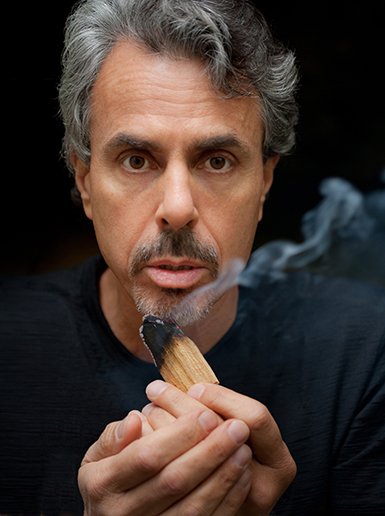True healing puts into order the body, mind and spirit with the past, present, and future. What kind of agent or method or formula or treatment can help to effect such sweeping, integrated healing? I offer for your consideration ayahuasca, a psychoactive potion indigenous to the Amazon rainforest, and the only combinatory vision-inducing agent in the world. Made from the vine Banisteriopsis caapi (often called caapi) and the leaf Psychotria viridis, (known as chakruna) ayahuasca is both a portal to the spirit world, and an enigma that has baffled scientists and anthropologists for centuries.
Ayahuasca, traditionally administered in special healing ceremonies by highly trained shamans known as ayahuasceros, is sometimes referred to as a hallucinogen. But it is no such thing. For while a hallucinogen produces visual phenomena rooted in the individual psyche, ayahuasca opens up channels to the spirit world, and the drinker/participant bears witness to that landscape. It is best to name ayahuasca a sacred plant medicine. For among those with whom the ceremonial healing use of ayahuasca is a way of life, the brew is referred to as “La Medicina,” the medicine.
In nature a number of plants and fungi are known for their vision-inducing effects. Peyote, San Pedro cactus, Iboga and the Psilocybin mushrooms are all used in traditional ceremonies to gain access to the spirit world, and to effect healing. But unlike all of these single-species agents, ayahuasca is combinatory- made up of two plants- and there the mystery is greatly compounded.
In the Amazon rainforest, approximately 80,000 higher plants grow in that lush, verdant environment. Perhaps as many as 10,000 plants are vines. Virtually all of the plants in the Amazon have leaves. And yet, somehow, somebody figured out to use one particular species of vine (Banisteriopsis caapi), and one species of leaf (Psychotria viridis), to make a ceremonial psychoactive brew. Here the so-called trial-and-error theory dissolves like sugar in water. Neither the vine nor the leaf is especially distinguished in appearance. There is simply nothing morphological to suggest that either one, or the two together, would in any way be more suitable for the making of a psychoactive healing brew than any other plants. The odds of selecting these two plants from all the others is a multi-billion to one long shot. So how did this take place? The shamans will soberly tell you that the plants originally told people.

Chris Kilham with Palo Santo. Photo by Jeff Skeirik
Visionary plants including ayahuasca, psilocybin mushrooms, iboga, peyote, cannabis, San Pedro cactus, and other sacred medicines will enjoy center stage at Visionary Convergence in Los Angeles in September, where visionaries, doctors, researchers, spiritual teachers, healers, therapists, filmmakers, and artists will set a brisk pace for the brilliant currents of mind that will freely flow for three days. It’s a go-big-or-go-home proposition, with the full force of dozens of talented presenters unfettered and free in a place without cognitive borders. The mission of Visionary Convergence 2015 is to cultivate Entheogenic Awareness. Like an EpiPen to the third eye, Visionary Convergence is guaranteed to stimulate the brilliance for which psychedelics, or entheogens if you prefer, are so well known, loved and revered.
For more information on Visionary Convergence in LA September 25 – 27, visit: plantteachers.com With ten million people in the greater Los Angeles metropolitan region and interest in psychedelics at an all-time high, the remaining tickets will not collect moss. This is a significant tribal gathering. See you there.
Chris Kilham is the author of The Ayahuasca Test Pilots Handbook, The Essential Guide To Ayahuasca Journeying. He is speaking at the PlantTeachers Visionary Convergence (plantteachers.com) in Los Angeles, September 25-27. medicinehunter.com
Chris Kilham is a yogi, medicine hunter, teacher and author of fifteen books. Chris explores natural remedies and mystic traditions in remote regions of the world and has worked and studied with yogis, lamas, shamans, and healers for five decades.
